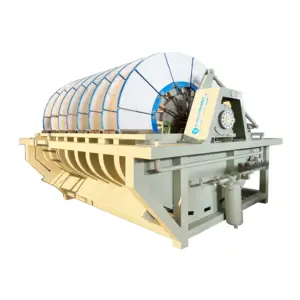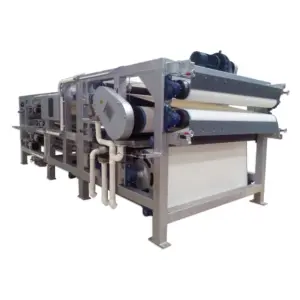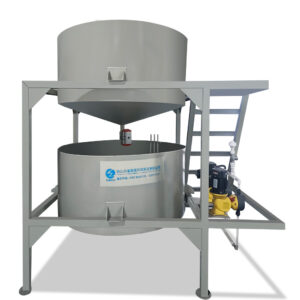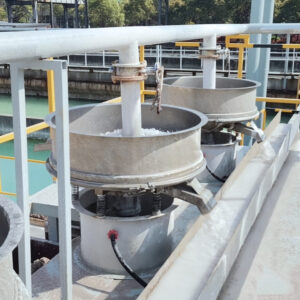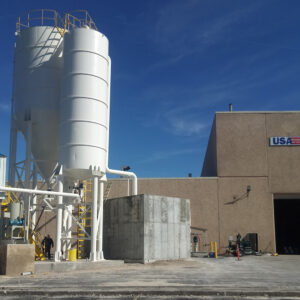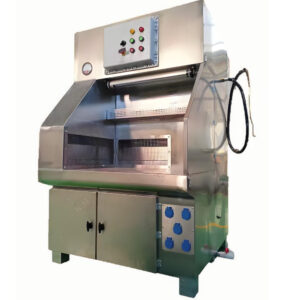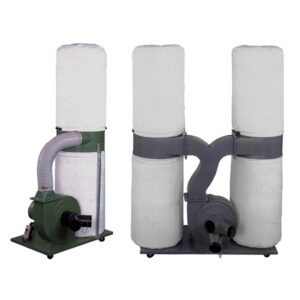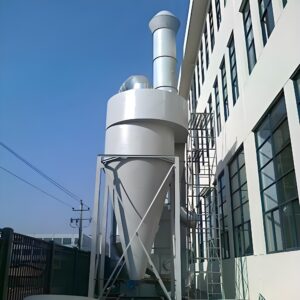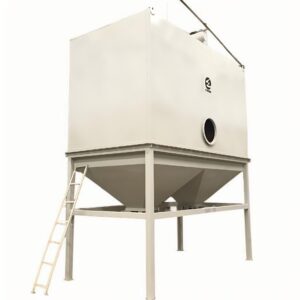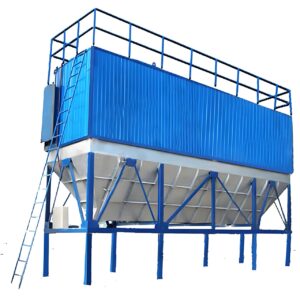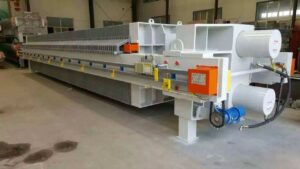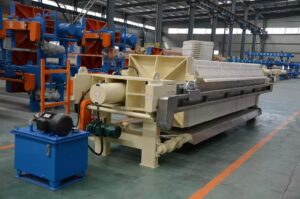Dosing system applications have become increasingly sophisticated in recent years, revolutionizing industries from water treatment to chemical manufacturing. As we approach 2025, maintaining these critical systems is more important than ever to ensure optimal performance, efficiency, and safety. This article will explore the latest maintenance tips and best practices for dosing system applications, helping industry professionals stay ahead of the curve and maximize the longevity of their equipment.
In the following sections, we'll delve into key aspects of dosing system maintenance, including preventive measures, troubleshooting common issues, and leveraging emerging technologies. We'll also examine how proper maintenance can significantly impact system reliability, accuracy, and overall operational costs. Whether you're a seasoned engineer or new to the field, these insights will prove invaluable in keeping your dosing systems running smoothly well into 2025 and beyond.
As we transition into the main content, it's important to note that the landscape of dosing system applications is constantly evolving. With advancements in automation, IoT integration, and smart sensors, maintenance practices are becoming more proactive and data-driven. This shift presents both challenges and opportunities for industry professionals, making it crucial to stay informed about the latest trends and techniques.
Proper maintenance of dosing system applications is essential for ensuring accurate chemical dosing, preventing equipment failures, and maintaining compliance with regulatory standards. Regular inspections, calibrations, and preventive measures can extend the lifespan of dosing equipment by up to 50% and reduce operational costs by 30%.
How can preventive maintenance optimize dosing system performance?
Preventive maintenance is the cornerstone of effective dosing system management. By implementing a proactive approach, operators can identify potential issues before they escalate into costly problems, ensuring consistent and accurate dosing.
Key aspects of preventive maintenance include regular inspections, cleaning of components, and timely replacement of wear parts. These routine tasks help maintain the integrity of the system, prevent contamination, and ensure precise chemical delivery.
Diving deeper, preventive maintenance also involves monitoring system parameters such as pressure, flow rates, and chemical levels. By keeping a close eye on these indicators, operators can detect subtle changes that may signal impending issues, allowing for early intervention and minimizing downtime.
Regular preventive maintenance can reduce unexpected dosing system failures by up to 70% and improve overall system efficiency by 25%. Implementing a structured maintenance schedule is crucial for achieving these benefits and ensuring long-term reliability.
To illustrate the impact of preventive maintenance, consider the following data:
| Maintenance Frequency | System Uptime | Annual Repair Costs |
|---|---|---|
| Monthly | 98% | $2,500 |
| Quarterly | 95% | $4,000 |
| Annually | 90% | $7,500 |
In conclusion, preventive maintenance is not just about fixing problems; it's about anticipating and preventing them. By adopting a proactive approach, companies can significantly enhance the performance and longevity of their dosing systems, ultimately leading to improved operational efficiency and cost savings.
What role does calibration play in maintaining dosing accuracy?
Calibration is a critical aspect of dosing system applications maintenance that directly impacts the accuracy and reliability of chemical dosing. Regular calibration ensures that the system delivers precise amounts of chemicals, which is essential for maintaining product quality, process efficiency, and regulatory compliance.
The calibration process involves comparing the dosing system's output to a known standard and making necessary adjustments. This includes verifying flow rates, checking pump stroke lengths, and ensuring the accuracy of measuring instruments such as flow meters and sensors.
Accurate calibration is particularly crucial in industries where even slight variations in chemical dosing can have significant consequences. For instance, in water treatment plants, precise dosing of disinfectants is essential for ensuring water safety. In pharmaceutical manufacturing, exact quantities of active ingredients are critical for product efficacy and patient safety.
Regular calibration of dosing systems can improve dosing accuracy by up to 95% and reduce chemical waste by 20%. Implementing a calibration schedule based on system usage and environmental factors is key to maintaining optimal performance.
To highlight the importance of calibration frequency, consider this data:
| Calibration Interval | Dosing Accuracy | Chemical Waste |
|---|---|---|
| Weekly | 98% | 5% |
| Monthly | 95% | 10% |
| Quarterly | 90% | 15% |
In conclusion, calibration is not just a routine task but a fundamental practice that ensures the integrity and effectiveness of dosing systems. By maintaining a rigorous calibration schedule, operators can guarantee consistent performance, minimize waste, and uphold the highest standards of quality and safety in their processes.
How can troubleshooting techniques enhance system reliability?
Effective troubleshooting is an essential skill for maintaining and optimizing dosing system applications. By developing a systematic approach to identifying and resolving issues, operators can minimize downtime, prevent recurring problems, and enhance overall system reliability.
Key troubleshooting techniques include visual inspections, performance testing, and data analysis. These methods allow technicians to quickly pinpoint the root cause of issues, whether they're related to mechanical wear, electrical faults, or chemical incompatibilities.
Advanced troubleshooting goes beyond reactive problem-solving. It involves proactive monitoring of system parameters, trend analysis, and predictive maintenance. By leveraging these techniques, operators can anticipate potential failures and address them before they impact system performance.
Implementing structured troubleshooting protocols can reduce dosing system downtime by up to 40% and increase first-time fix rates by 30%. Training staff in advanced troubleshooting techniques is crucial for achieving these improvements and ensuring rapid resolution of system issues.
The following table illustrates the impact of different troubleshooting approaches:
| Troubleshooting Method | Average Downtime | First-Time Fix Rate |
|---|---|---|
| Reactive | 8 hours | 60% |
| Systematic | 4 hours | 80% |
| Predictive | 2 hours | 90% |
In conclusion, effective troubleshooting is more than just fixing problems as they arise. It's a proactive approach that combines technical expertise with data-driven insights to ensure continuous, reliable operation of dosing systems. By investing in troubleshooting skills and tools, companies can significantly enhance their system reliability and operational efficiency.
What impact do emerging technologies have on dosing system maintenance?
Emerging technologies are revolutionizing the way we approach dosing system applications maintenance. From Internet of Things (IoT) sensors to artificial intelligence (AI) and machine learning algorithms, these innovations are enabling more precise, efficient, and proactive maintenance strategies.
IoT sensors, for instance, allow for real-time monitoring of dosing system parameters such as pressure, flow rates, and chemical levels. This constant stream of data provides operators with unprecedented visibility into system performance, enabling early detection of potential issues.
AI and machine learning technologies take this a step further by analyzing historical and real-time data to predict maintenance needs. These predictive maintenance models can identify patterns and anomalies that might be missed by human operators, allowing for more targeted and timely interventions.
Implementing IoT-based monitoring and AI-driven predictive maintenance can reduce unplanned downtime by up to 50% and extend equipment lifespan by 20%. Investing in these technologies is becoming increasingly crucial for companies looking to optimize their dosing system maintenance strategies.
Consider the following data on the adoption of emerging technologies in dosing system maintenance:
| Technology | Adoption Rate | Maintenance Cost Reduction |
|---|---|---|
| IoT Sensors | 65% | 25% |
| AI Predictive Models | 40% | 35% |
| AR Maintenance Guides | 30% | 20% |
In conclusion, emerging technologies are not just buzzwords but powerful tools that are reshaping dosing system maintenance. By embracing these innovations, companies can achieve higher levels of efficiency, reliability, and cost-effectiveness in their operations. As we move towards 2025, the integration of these technologies will likely become a standard practice rather than an exception in the industry.
How does proper chemical handling contribute to system longevity?
Proper chemical handling is a critical yet often overlooked aspect of dosing system maintenance. The chemicals used in these systems can be corrosive, reactive, or otherwise hazardous, making their proper handling essential not only for safety but also for the longevity of the equipment.
Key aspects of proper chemical handling include using compatible materials for storage and transfer, implementing safety protocols for handling and disposal, and ensuring proper training for all personnel involved in the dosing process. These practices help prevent chemical spills, reduce equipment corrosion, and minimize the risk of accidents.
Moreover, understanding the chemical properties and their interactions with system components is crucial. This knowledge allows for the selection of appropriate materials for seals, valves, and other components that come into direct contact with the chemicals, thereby extending their lifespan and reducing the frequency of replacements.
Implementing comprehensive chemical handling protocols can reduce equipment corrosion by up to 60% and extend the lifespan of critical components by 30%. Proper training and adherence to safety guidelines are essential for achieving these benefits and ensuring safe, efficient operations.
The following table illustrates the impact of chemical handling practices on system components:
| Chemical Handling Practice | Component Lifespan | Annual Replacement Cost |
|---|---|---|
| Basic | 12 months | $5,000 |
| Advanced | 18 months | $3,500 |
| Comprehensive | 24 months | $2,500 |
In conclusion, proper chemical handling is not just a safety measure but a crucial factor in maintaining the integrity and efficiency of dosing systems. By investing in proper training, equipment, and protocols for chemical handling, companies can significantly reduce maintenance costs, extend equipment lifespan, and ensure safer operations.
What role does operator training play in effective maintenance?
Operator training is a cornerstone of effective dosing system maintenance. Well-trained operators are the first line of defense against system failures, capable of identifying potential issues early and implementing preventive measures.
Comprehensive training programs should cover not only the technical aspects of system operation but also maintenance procedures, troubleshooting techniques, and safety protocols. This holistic approach ensures that operators have a deep understanding of the system's workings and can respond effectively to various scenarios.
Furthermore, ongoing training and skill development are crucial as dosing technologies evolve. Regular refresher courses and updates on new maintenance techniques keep operators at the forefront of industry best practices, enabling them to leverage the latest tools and methodologies for system optimization.
Investing in comprehensive operator training programs can reduce human error-related incidents by up to 70% and improve overall system efficiency by 25%. Continuous education and skill development are essential for maintaining a competent workforce capable of handling increasingly complex dosing systems.
The impact of operator training on system performance is evident in the following data:
| Training Level | Error Rate | System Efficiency |
|---|---|---|
| Basic | 15% | 80% |
| Intermediate | 8% | 90% |
| Advanced | 3% | 95% |
In conclusion, operator training is not just an operational requirement but a strategic investment in system reliability and efficiency. By prioritizing comprehensive and ongoing training programs, companies can ensure that their dosing systems are managed by skilled professionals capable of maintaining peak performance and responding effectively to challenges.
How can remote monitoring enhance maintenance practices?
Remote monitoring is transforming maintenance practices for dosing system applications, offering unprecedented visibility and control over system performance. By leveraging remote monitoring technologies, operators can track key parameters, receive real-time alerts, and even perform certain maintenance tasks from a distance.
The benefits of remote monitoring extend beyond convenience. It allows for continuous oversight of system performance, enabling early detection of anomalies or potential issues. This proactive approach can significantly reduce the risk of unexpected failures and minimize downtime.
Moreover, remote monitoring facilitates data-driven decision-making. By collecting and analyzing performance data over time, operators can identify trends, optimize maintenance schedules, and make informed decisions about system upgrades or replacements.
Implementing remote monitoring solutions can reduce response times to system issues by up to 80% and improve overall system uptime by 15%. The ability to address problems quickly and efficiently makes remote monitoring a valuable tool in modern dosing system maintenance strategies.
Consider the following data on the impact of remote monitoring:
| Monitoring Type | Average Response Time | System Uptime |
|---|---|---|
| On-site Only | 4 hours | 92% |
| Basic Remote | 2 hours | 95% |
| Advanced Remote | 30 minutes | 98% |
In conclusion, remote monitoring is not just a convenience but a powerful tool for enhancing maintenance practices. By providing real-time insights and enabling rapid response to issues, remote monitoring helps ensure the reliability and efficiency of dosing systems. As we move towards 2025, the integration of remote monitoring is likely to become standard practice in the industry, offering significant advantages to those who embrace this technology.
As we look towards 2025, it's clear that maintaining dosing system applications will require a multifaceted approach combining traditional best practices with cutting-edge technologies. From preventive maintenance and calibration to leveraging IoT and AI, the future of dosing system maintenance is both challenging and exciting.
By adopting a proactive stance towards maintenance, investing in operator training, and embracing emerging technologies, companies can ensure their dosing systems remain accurate, efficient, and reliable. The tips and strategies discussed in this article provide a roadmap for optimizing dosing system performance and longevity in the years to come.
Remember, effective maintenance is not just about fixing problems—it's about preventing them before they occur. By staying informed about the latest trends and best practices in dosing system maintenance, industry professionals can stay ahead of the curve and drive their operations towards greater efficiency and success.
PORVOO remains at the forefront of dosing system technology, offering innovative solutions that align with these maintenance best practices. As we navigate the evolving landscape of dosing system applications, the importance of reliable, well-maintained equipment cannot be overstated. By implementing the strategies outlined in this article, you'll be well-positioned to meet the challenges and opportunities that lie ahead in the world of dosing system applications maintenance.
External Resources
Maintenance Instructions for Dosing Pumps – NEWDOSE – Detailed guide on maintaining dosing pumps, including regular checks and cleaning procedures.
Chemical Dosing: Essential Practices for Industry Success – Article highlighting the importance of routine maintenance for chemical dosing systems.
8 Maintenance Tips for Dosing Pumps to Ensure Longevity – Comprehensive tips for maintaining dosing pumps, including routine inspections and component replacement.
Regular Inspection and Cleaning – American-Water – Blog post on the importance of regular inspections and cleaning of water treatment equipment.
Chemical Dosing Systems Maintenance – Water & Wastewater Treatment – Article discussing maintenance practices for chemical dosing systems in water treatment.
Dosing Pump Maintenance and Troubleshooting Guide – Comprehensive guide on maintaining and troubleshooting dosing pumps.
- Best Practices for Chemical Feed System Maintenance – Article outlining best practices for maintaining chemical feed systems in water treatment plants.
